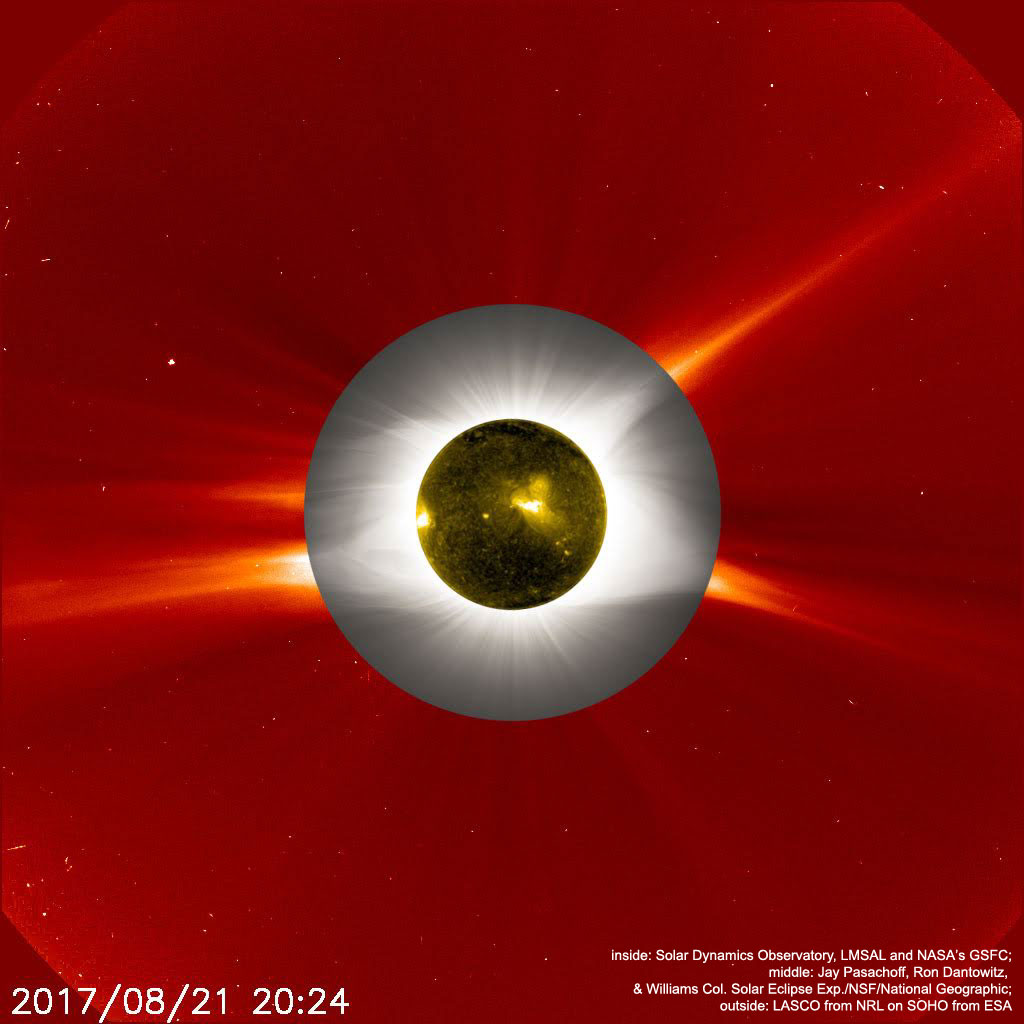more »
Neither rain, nor snow, nor dark of night can keep a space-based spacecraft from
watching the Sun. In fact, from its vantage point 1.5 million kilometers sunward of planet Earth, NASA's
SOlar Heliospheric Observatory (SOHO) can always
monitor the Sun's outer atmosphere, or
corona. But only during a total solar
eclipse can Earth-based observers also see the
lovely coronal streamers and structures - when the Moon briefly blocks the overwhelmingly bright solar surface. Then, it becomes possible to follow detailed
coronal activity all the way down to the Sun's surface. In the outside layer of this composite image, SOHO's uninterrupted view of the
solar corona during
last month's eclipse is shown in orange hues. The middle, donut-shaped region is
the corona as recorded by the
Williams College Eclipse Expedition to
Salem, Oregon. Simultaneously, the inner view is from NASA's Earth-orbiting
Solar Dynamics Observatory, which, being
outside of totality, was able to image the face of the Sun in extreme
ultraviolet light, shown in gold.
Zazzle Space Gifts for young and old
